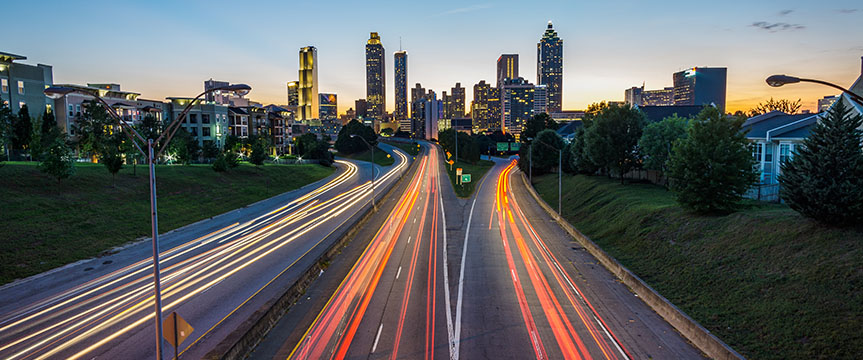The smart technology set to change the automotive industry

The term ‘smart technology’ isn’t as alien now as it once was. Everything in the home is ‘smart’ and every gadget can seemingly link up to your phone. You know, just in case you need to set the kettle boiling from the comfort of your bed.
But there is no bigger gadget than the car; the automotive industry is readily embracing the ever-changing world of tech and is on course to undergo more change in the next decade than it has in its entire history. How we drive – if we drive – will change for the better, so let’s look at what’s on the horizon for the automotive sector.
The future inside your car
Everything is seemingly connected to everything else and your car isn’t exempt from that. We already have examples of how your mobile phone can integrate with your car, connecting via bluetooth to control various aspects and that idea will only continue to grow.
Predictive vehicle technology is a burgeoning market; it uses artificial intelligence (AI) and machine learning to personalise your driving experience. Basic implementation of this can already be found in some cars – aspects like entertainment settings and seat adjustment can be set to individual profiles but this is only the start. It will no doubt expand to feed you all the information you want and need. It might notice you like to stop for a coffee on your morning commute and find you a route to work that passes by a Starbucks.
It goes beyond convenience; new safety features are a guarantee. One technology currently emerging in the high-end market is virtual wing mirrors. Instead of the usual wing mirrors, the idea is to affix a camera to either side of the car and have a live video feed play inside the car. Without the bulky mirror, you reduce drag, increasing the efficiency of the car. It’s a worthwhile pursuit, especially since the question of range is such a hot topic right now for electric vehicles. As they say, every little helps. It’s an innovation you can already see in a couple of hypercars very close to REALTIME’s heart and as with most new car technologies, it will most likely filter down into the mass market eventually, it’s just a matter of when.
We will no doubt reach a time where every part of the car is smart; we already have discussions around ‘intelligent tech’ – intelligent windows that show you a heads-up display, intelligent lights that automatically adjust to protect other drivers and intelligent tyres that alert you when they suffer a puncture or need replacing. Soon enough we won’t even be driving cars ourself is self-driving technology reaches the consumer market. Owning cars might become a foreign concept in our lifetime.
The future outside your car
That’s a drastic statement and slight hyperbole – some could never let go of the idea of owning a car – but we are already seeing the emergence of ‘cars as a service’ (CaaS). Or, to put it another way, ‘Netflix for cars’. They already exist and are subscription services where you don’t own a car or even lease it, you are effectively renting it. Yet it’s an appealing offer: For a flat rate every month, you get everything you need and can change up any time. Long-term or short-term, it doesn’t matter. They have yet to see mass adoption but given society’s proclivity for subscription services, that day may soon be here.
Smart technology will also undoubtedly make its way to our roads too. AI will be able to determine when and where certain changes are needed. Opening and closing lanes, adjusting speed limits, closing roads to divert traffic – all are possibilities with smart roads. Of course, it requires a level of investment in infrastructure far beyond many local councils and governments, so expect this to be a slower build.
But it can get even more futuristic; some have floated the idea of lining roads with photovoltaic panels to store electricity. This could be used to charge electric vehicles as they drive, heat roads to prevent ice build ups, and – if they have LED lights in them – create dynamic road crossings for pedestrians.
It all seems very Westworld, but these aren’t hypothetical ideas – they are being worked on as we speak. In many ways, we are already living in the future, so these concepts don’t seem too out of place. It’s an exciting world we live in and I for one can’t wait to see where we are 10 years from now.
The future is bright, and you’re taking us there. If you have an exciting project you would love to talk about, feel free to get in touch at [email protected].


